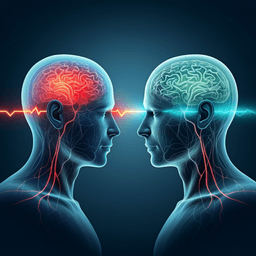
Medicine and Health
Total sleep deprivation increases pain sensitivity, impairs conditioned pain modulation and facilitates temporal summation of pain in healthy participants
A. T. Staffe, M. W. Bech, et al.
Explore how total sleep deprivation impacts pain sensitivity in this compelling study by Alexander Torp Staffe and colleagues. Discover the surprising connection between sleep and pain mechanisms, revealing critical insights into chronic pain management.
~3 min • Beginner • English
Related Publications
Explore these studies to deepen your understanding of the subject.







